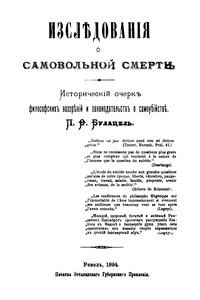В пучине бренного мира. Японское искусство и его коллекционер Сергей Китаев - [70]
Into Captivity
Beginning in 1896, Kitaev’s attempts to exhibit his collection and to make it available to the public on a permanent basis by selling it to the state encountered all kinds of red tape. In a letter of 1904 addressed to Valerian P. Loboikov (1861–after 1917), secretary of the Russian Academy of Art in Saint Petersburg, Kitaev relates his sad experience in organizing the exhibition of 1896:
I have to begin from afar. Enthusiastically, I was forming my collection, having in mind to display it for the public without charge. I considered the collection rich enough to provide to my fellow citizens an idea of what kind of a rival (in 1896!) we were dealing with by showing them the arts of the people of Japan and thirteen hundred photographs of the country and domestic life of their nation.
To fulfill my youthful undertaking (I was about thirty at that time), I brought the collection to St. Petersburg and applied to the I[mperial] S[ocie]ty for Advan[cement] of the Arts for a free exhibition space, thinking that the development of the artistic taste of Russian society is included in its mission. And what did I learn? I was told that I had to pay a huge sum (don’t remember now – one or two thousand per month) and to take care of all preparation and security. It was the first knife into my heart.
I applied to the Academy of Sciences, thinking that the ethnographic part (the photographs) would be interesting enough to enable this Learned Institution to support my educational goal. A hall they really were willing to give for free, but stark empty. Easels, fabrics, heating, all management, security and organization I had to take care of single-handedly.
It was the second knife; I thanked the administration and declined. There remained the I[mperial] Academy of Arts. The charming Count N. I. Tolstoy and V. G. Makovsky, with your good offices, gave me the space without charge; however, acting by Academy regulations, I had to pay to your bursar a fee for amortization of a staircase carpet (which was never there, by the way), add fabric to upholster the boards, order at my expense shelves for the photographs, hire a cashier, organize and pay for publications and pay for attendants…
The response of press and the public was very different; there were about eight hundred visitors per day, which I did not expect, having in mind the Petersburg December, dark and busy with Christmas preparations. This brought me moral solace…[232]
As early as 1898, Kitaev began wishing to donate his collection to the future Moscow Museum of Fine Arts, which at that time was in the early stages of construction. He wrote twice to Professor Ivan V. Tsvetaev (1847–1913), the director. Tsvetaev’s responses are unknown. A professor of art history at Moscow University and a specialist in Roman antiquities, he made titanic efforts to establish an educational museum filled with plaster casts of classical and Renaissance masterpieces. Possibly, Japanese prints and scrolls were very far from his ideal of a fine arts museum[233].
In 1904, the newspaper Sankt-Peterburgskie Vedomosti (Saint Petersburg Gazette) published an interview with Kitaev titled “The Captive.” It begins:
Becoming interested in Japanese painting, I could not resist the temptation to rummage in the immense collection of kakemono of S. N. Kitaev. This is a unique collection in Russia and now, perhaps, the best among all private collections in Europe…
[Kitaev is then quoted.] “I’d be happy to help you, but unfortunately I can’t. My Japanese collection is in captivity now… and I do not think that it would be possible to deliver it soon. It languishes in Moscow in storage… packed in crates and packages and nailed up”… S. N. [Kitaev] gave me a shocking example of how the most wholesome and unselfish, almost self-abnegating endeavors are ruined in Russia[234].
The journalist reports that not a single Russian institution, except for the Stroganov School of Technical Drawing, asked Kitaev if the collection were available to buy. On the other hand, he adds, “several inquiries came from abroad… There were a few offers from Japan to buy the collection, and Hasekawa was going to travel to Russia to try to overcome the stubbornness of Mr. Kitaev.”
But it was only the beginning of the collection’s misfortunes (and those of the collector himself). In 1916, Kitaev was preparing to travel abroad for prolonged medical treatment, and he offered the government the chance to buy his collection. Surprisingly, the response went as far as establishing a commission of experts to evaluate the collection. Its members were Sergei Oldenburg (1863–1934), a professor of Buddhism and Indian culture; Sergei Eliseev (known in the West as Serge Elisséeff, 1889–1975), a Japanologist who had just returned from Japan after becoming the first European graduate of Tokyo University; Pavel Pavlinov, Kitaev’s fellow naval officer and artist; and Anna Ostroumova-Lebedeva, the printmaker who had been impressed by the collection at the 1896 exhibition. It was in anticipation of the examination of his collection that Kitaev sent two letters to Pavlinov to whet the latter’s interest. The commission met in Kitaev’s home in Saint Petersburg in September 1916 over the course of seven evenings, and recommended to the government that it should buy the collection. However, the purchase fell through because, as Pavlinov wrote forty years later, due to wartime expenses the government could not meet Kitaev’s asking price of one hundred and fifty thousand rubles, comparable to about fifty thousand dollars in 1916. That year was the beginning of a huge inflation in Russia; prices skyrocketed in autumn. Before the war, Kitaev’s salary would have been about three thousand rubles per annum. An apartment of five or six rooms, with bathroom and electriсity, averaged about two hundred per month. In 1898, Kitaev had wanted to sell his collection for fifteen thousand rubles. The difference between that figure and his asking price in 1916 was based on inflation, an increase in prices for Japanese art and the fact that in 1898 he was willing to sell his holdings for a fraction of their real value.

"Ясным осенним днем двое отдыхавших на лесной поляне увидели человека. Он нес чемодан и сумку. Когда вышел из леса и зашагал в сторону села Кресты, был уже налегке. Двое пошли искать спрятанный клад. Под одним из деревьев заметили кусок полиэтиленовой пленки. Разгребли прошлогодние пожелтевшие листья и рыхлую землю и обнаружили… книги. Много книг.".
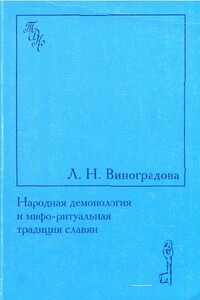
Книга посвящена «низшей» мифологии славян, т. е. народным поверьям о персонажах нечистой силы — русалках, ведьмах, домовых, о духе-любовнике и духах-прорицателях и т. п. Затрагиваются проблемы, связанные с трудностями идентификации демонологических персонажей и с разработкой методов сравнительного изучения демонологии разных славянских народов. При исследовании этого важнейшего фрагмента народной культуры главным для автора остается факт включенности мифологических персонажей во все сферы бытовой и обрядовой жизни традиционного общества.
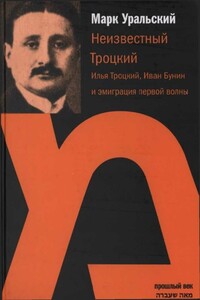
Марк Уральский — автор большого числа научно-публицистических работ и документальной прозы. Его новая книга посвящена истории жизни и литературно-общественной деятельности Ильи Марковича Троцкого (1879, Ромны — 1969, Нью-Йорк) — журналиста-«русскословца», затем эмигранта, активного деятеля ОРТ, чья личность в силу «политической неблагозвучности» фамилии долгое время оставалась в тени забвения. Между тем он является инициатором кампании за присуждение Ивану Бунину Нобелевской премии по литературе, автором многочисленных статей, представляющих сегодня ценнейшее собрание документов по истории Серебряного века и русской эмиграции «первой волны».
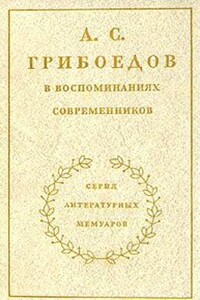
В сборник вошли наиболее значительные и достоверные воспоминания о великом русском писателе А. С. Грибоедове: С. Бегичева, П. Вяземского, А. Бестужева, В. Кюхельбекера, П. Каратыгина, рассказы друзей Грибоедова, собранные Д. Смирновым, и др.
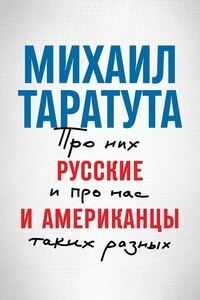
Эта книга о том, что делает нас русскими, а американцев – американцами. Чем мы отличаемся друг от друга в восприятии мира и себя? Как думаем и как реагируем на происходящее? И что сделало нас такими, какие мы есть? Известный журналист-международник Михаил Таратута провел в США 12 лет. Его программа «Америка с Михаилом Таратутой» во многом открывала нам эту страну. В книге автор показывает, как несходство исторических путей и культурных кодов русских и американцев определяет различия в быту, карьере, подходах к бизнесу и политике.
